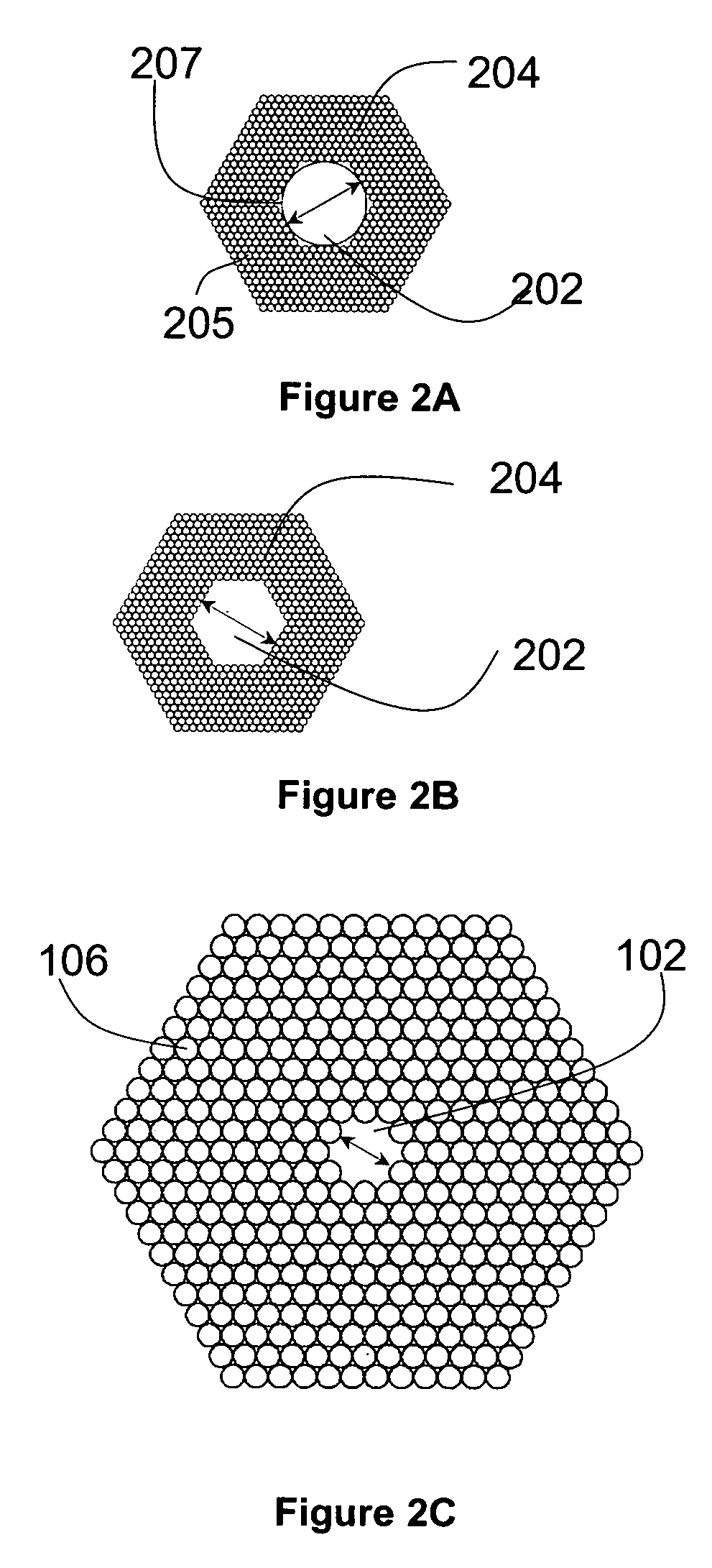Photonic bandgap fibers
a bandgap fiber and photonic technology, applied in the field of optical fibers, can solve the problem that the pulse cannot otherwise be guided over substantial distances in a conventional optical fiber, and achieve the effect of reducing transmission loss
- Summary
- Abstract
- Description
- Claims
- Application Information
AI Technical Summary
Benefits of technology
Problems solved by technology
Method used
Image
Examples
examples
[0139] Any two dielectric media with different refractive indexes can be used to implement the fiber structures described herein. A suitable candidate for the high index material is glass, especially fused silica glass which is advantageous physical and optical properties, and durability. The low index medium can be chosen from one or a mixture of gases or vacuum. This choice of low index material has high nonlinear threshold, low scattering and absorption loss, and very low dispersion.
[0140] A PBGF with a wide transmission band has many applications, e.g. telecommunication and trace gas analysis based on spectral absorption or Raman scattering techniques. Such a broad transmission band can be achieved in Bragg fibers with νh2−nl2)1 / 2 and R<0.3. Wavelength scaling enables fiber designs for any wavelength range. The fiber dimension can be scaled proportionally to wavelength, i.e. double wavelength results in double fiber dimension.
[0141] Broad transmission band can also be achieved...
PUM
| Property | Measurement | Unit |
|---|---|---|
| width | aaaaa | aaaaa |
| width | aaaaa | aaaaa |
| thickness | aaaaa | aaaaa |
Abstract
Description
Claims
Application Information
 Login to View More
Login to View More - R&D
- Intellectual Property
- Life Sciences
- Materials
- Tech Scout
- Unparalleled Data Quality
- Higher Quality Content
- 60% Fewer Hallucinations
Browse by: Latest US Patents, China's latest patents, Technical Efficacy Thesaurus, Application Domain, Technology Topic, Popular Technical Reports.
© 2025 PatSnap. All rights reserved.Legal|Privacy policy|Modern Slavery Act Transparency Statement|Sitemap|About US| Contact US: help@patsnap.com



